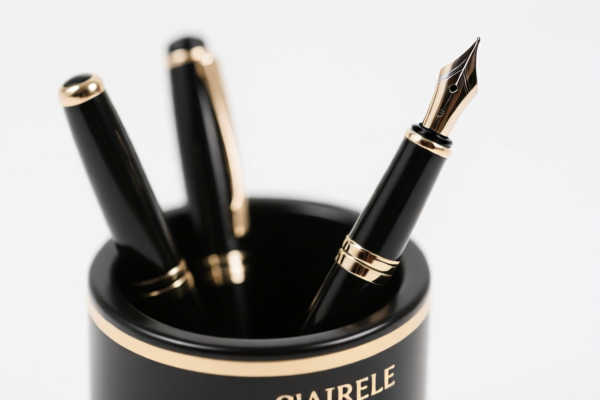| HS Code | Official Doc | Tariff Rate | Origin | Destination | Effective Date |
|---|---|---|---|---|---|
| 4202313000 | Doc | 58.7% | CN | US | 2025-05-12 |
| 4202316000 | Doc | 63.0% | CN | US | 2025-05-12 |
| 4205008000 | Doc | 55.0% | CN | US | 2025-05-12 |
| 3926903300 | Doc | 36.5% | CN | US | 2025-05-12 |
| 3926909989 | Doc | 42.8% | CN | US | 2025-05-12 |
| 3923900080 | Doc | 58.0% | CN | US | 2025-05-12 |




HS Code Classification for PEN CASES
Based on the provided reference data, here's a breakdown of potential HS codes for "PEN CASES", along with explanations to help you determine the most accurate classification. It's crucial to consider the material composition of the pen cases to select the correct code.
1. 4202.31.30.00 – Trunks, Suitcases, Vanity Cases, etc., of Leather or Composition Leather: Articles of a kind normally carried in the pocket or in the handbag: With outer surface of reptile leather
- 42: Articles of leather or of composition leather, not elsewhere specified or included.
- 02: Trunks, suitcases, vanity cases, briefcases, handbags, satchels, schoolbags, and similar containers.
- 31: Articles of a kind normally carried in the pocket or in the handbag.
- 30: With outer surface of reptile leather.
- Applicability: If the pen cases are made of reptile leather (e.g., snakeskin, crocodile skin), this is the most appropriate code.
- Tax Rate: Base Tariff: 3.7%, Additional Tariff: 25.0%, Post 2025.4.2 Additional Tariff: 30%. Total: 58.7%
2. 4202.31.60.00 – Trunks, Suitcases, Vanity Cases, etc., of Leather or Composition Leather: Articles of a kind normally carried in the pocket or in the handbag: With outer surface of leather or composition leather (other than reptile leather)
- 42: Articles of leather or of composition leather, not elsewhere specified or included.
- 02: Trunks, suitcases, vanity cases, briefcases, handbags, satchels, schoolbags, and similar containers.
- 31: Articles of a kind normally carried in the pocket or in the handbag.
- 60: With outer surface of leather or composition leather (other than reptile leather).
- Applicability: If the pen cases are made of standard leather (e.g., cowhide, sheepskin) or composition leather, this code applies.
- Tax Rate: Base Tariff: 8.0%, Additional Tariff: 25.0%, Post 2025.4.2 Additional Tariff: 30%. Total: 63.0%
3. 3926.90.33.00 – Other articles of plastics and articles of other materials: Beads, bugles and spangles, not strung (except temporarily) and not set; articles thereof, not elsewhere specified or included: Handbags
- 39: Plastics and articles thereof.
- 26: Other articles of plastics and articles of other materials.
- 90: Beads, bugles and spangles, not strung (except temporarily) and not set; articles thereof, not elsewhere specified or included.
- 33: Handbags.
- Applicability: If the pen cases are made of plastic and are classified as handbags, this code might be suitable. However, this is less likely unless the pen cases are specifically designed and marketed as handbags.
- Tax Rate: Base Tariff: 6.5%, Additional Tariff: 0.0%, Post 2025.4.2 Additional Tariff: 30%. Total: 36.5%
4. 3926.90.99.89 – Other articles of plastics and articles of other materials: Other: Other
- 39: Plastics and articles thereof.
- 26: Other articles of plastics and articles of other materials.
- 90: Other.
- 99: Other.
- 89: Other.
- Applicability: If the pen cases are made of plastic and don't fit into any other specific category within 3926.90, this is a general catch-all code.
- Tax Rate: Base Tariff: 5.3%, Additional Tariff: 7.5%, Post 2025.4.2 Additional Tariff: 30%. Total: 42.8%
Important Considerations & Recommendations:
- Material is Key: The primary determinant of the correct HS code is the material composition of the pen cases.
- Detailed Description: Provide a very detailed description of the pen cases to customs, including the exact materials used (e.g., "100% cowhide leather," "polypropylene plastic," "canvas with leather trim").
- Intended Use: While "pen case" is the general term, clarify if they are specifically designed as cosmetic bags or other similar uses, as this could influence classification.
- Certification: Depending on the material and destination country, you may need to provide certifications of origin or material composition.
- Consult with a Customs Broker: For complex cases or large shipments, it's highly recommended to consult with a licensed customs broker in the importing country. They can provide definitive guidance on the correct HS code and ensure compliance with all applicable regulations.
- Check for Updates: HS codes are subject to change, so always verify the latest codes and regulations before importing.
Customer Reviews
The page has a lot of good information, but I found it a bit overwhelming. I would have preferred a simpler way to filter by material type.
I was looking for HS codes for plastic pen cases and found exactly what I needed. The tax rates and explanations are clear and easy to understand.
The detailed explanation of the 3926903300 code helped me understand how plastic pen cases might be classified as handbags. Good info, though I still need to confirm with a customs broker.
The breakdown of HS Code 4202313000 was super helpful. I now know the exact tariff rate for my leather pen cases going to the US.